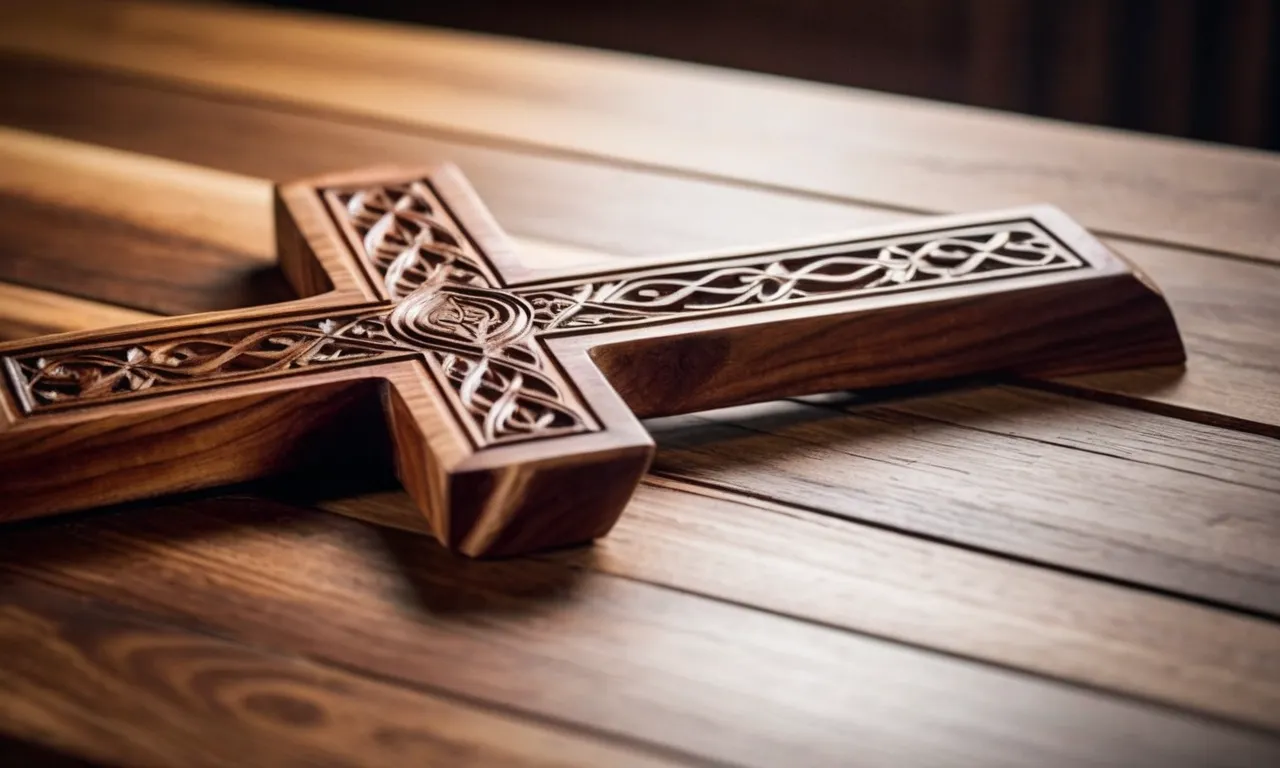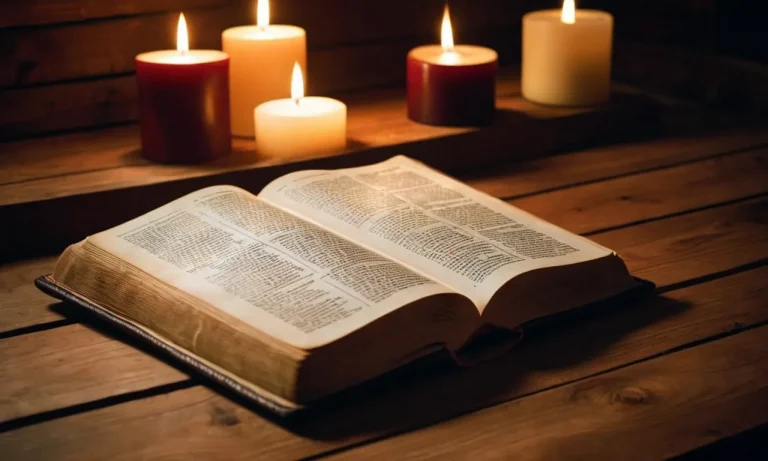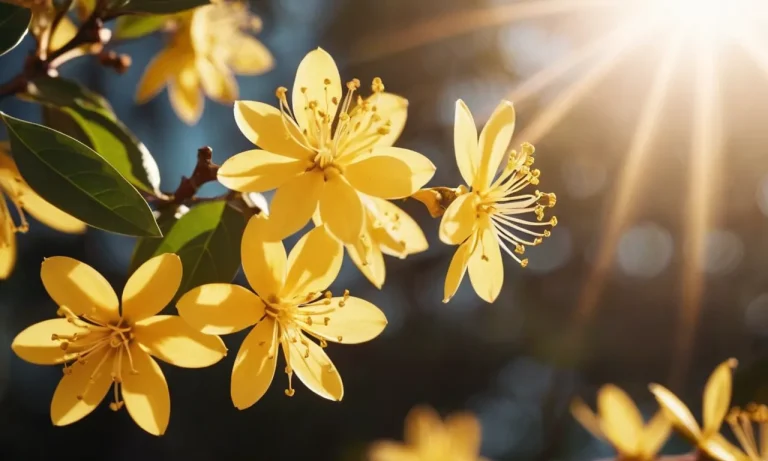What Is Acacia Wood In The Bible?
Acacia wood holds great significance in the Bible as the primary timber used to construct sacred objects like the Ark of the Covenant and parts of the Tabernacle. If you’re short on time, here’s a quick answer: Acacia wood in the Bible refers to wood from the acacia tree, which was prized for its durability and used to construct holy objects.
In this comprehensive guide, we will explore the various references to acacia wood throughout the Bible and analyze its spiritual and practical significance. We’ll cover where exactly this wood is mentioned, what it was used for, why it was the preferred material, the possible species referred to, and the deeper symbolic meaning behind the acacia tree.
Where Acacia Wood is Mentioned in the Bible
The Construction of the Tabernacle
Acacia wood is first mentioned in the Bible as a key material used in constructing parts of the Tabernacle, the portable sanctuary carried by the Israelites during the Exodus. Specifically, acacia wood was used to build the Ark of the Covenant, the altar of incense, the table of showbread and more.
This durable, dense wood was likely chosen due to its strength, hardness and resistance to decay.
In Exodus 25-30, God provides Moses extensive instructions on building the Tabernacle. Acacia wood is referenced repeatedly, emphasizing its integral role in the sacred structure. For example, Exodus 26 discusses using acacia wood panels standing upright to form the Tabernacle’s walls and frames.
Expert craftsmen overlaid these sturdy acacia planks with gold to form the bases of sacred furnishings.
The Ark of the Covenant
The most well-known usage of acacia wood is as the framework for the Ark of the Covenant. Exodus 25:10 states that acacia wood was the only material specified for constructing the Ark’s box-like container.
The dimensions are listed precisely: 2.5 cubits long, 1.5 cubits wide and 1.5 cubits high (roughly 45″ x 27″ x 27″).
This sacred chest stored the original stone tablets of the Ten Commandments. Expert artisans overlaid the acacia box with pure gold inside and out, with an ornate gold lid known as the mercy seat. The specific choice of durable acacia wood underscored the Ark’s purpose – protecting the divine laws for generations.
The Sacred Furnishings and Altars
Beyond the Ark, acacia wood was a frequent choice for Old Testament sacred objects. Exodus 30 documents that the Altar of Incense placed near the Ark was made of overlaid acacia wood. So was the Table of Showbread holding the consecrated bread inside the holy place (Exodus 25:23).
In the Tabernacle courtyard, sacrifices were made on the Bronze Altar. Like the sacred furnishings, acacia wood formed its structural base before craftsmen overlaid it with bronze (Exodus 27:1-2). The consistency of using acacia wood across these key Tabernacle items shows its significance and symbolic role in the Bible.
Just as acacia wood was strong and protected sacred items, it represented the strength and permanence of God’s covenants.
The Significance and Symbolism of Acacia Wood
Durability and Strength
Acacia wood is mentioned several times in the Bible, most notably as the type of wood used to construct the Ark of the Covenant, the Tabernacle, and parts of the Temple. This is significant because acacia wood has unique properties that made it an excellent choice for these sacred objects.
Acacia trees produce dense, durable lumber that is resistant to water damage and decay. This strength and durability means objects made from acacia wood can endure for many years. For the ancient Israelites, this made it the perfect material to construct the holiest objects as a permanent dwelling place for God among His people.
The ark, tabernacle, and temple were not just everyday objects, but represented the presence of the Lord Himself. Therefore, constructing them from acacia wood emphasized the permanence and stability God’s presence brought.
Additionally, acacia wood was readily available in the Sinai desert where the Israelites wandered for 40 years. The fact that God commanded a plentiful local wood speaks to how He provided for the Israelites in miraculous ways during their journey.
Though seemingly ordinary, acacia wood took on sacred significance as the material God selected for some of the most important spiritual structures in the lives of His people.
Connection to the Burning Bush
There is a tradition that the burning bush from which God spoke to Moses was also made of acacia wood. This connection highlights the symbolic meaning of acacia wood in the Bible.
The burning bush miracle occurred when God spoke to Moses through a bush that burned but was not consumed by the flames (Exodus 3:1-4). Acacia wood was very durable and resistant to fire. By some interpretations, God may have selected a bush made from acacia wood that could withstand the flames for this theophany.
Just as the burning bush was set on fire but not destroyed, the acacia wood holy structures symbolized how God dwelt among His people without consuming them.
Additionally, the burning bush represents how God made His presence and glory known even in the ordinary forms of creation. In a similar way, humble acacia wood was elevated to sacred status as it formed God’s dwelling place first in the tabernacle and later in the temple.
The connection between acacia wood and the burning bush highlights how God can use the mundane materials of our world for miraculous purposes.
Identifying the Biblical Acacia Tree Species
The acacia tree is mentioned numerous times throughout the Bible, but there has been some debate over exactly which species of acacia the Bible is referring to. Based on historical evidence and botanical research, most scholars believe there are three main types of acacias mentioned in the Scriptures:
Acacia nilotica
The acacia nilotica, also known as the thorny acacia, is native to Africa, the Middle East, and parts of Asia. This species grows between 20-40 feet tall and has pairs of straight, light grey thorns. The acacia nilotica produces golden yellow flowers and long seed pods.
It thrives in hot, arid climates which fits the Middle Eastern environment described in the Bible. This tree is believed to be the “burning bush” Moses encountered and the acacia wood used to construct the Ark of the Covenant and tabernacle.
Acacia seyal
The acacia seyal, or Red acacia, is another variety native to the Nile valley and Middle East. This species grows between 15-30 feet tall in sandy or rocky soils. Identifying features are its reddish bark, short paired thorns, and puffball flowers.
The acacia seyal is drought tolerant and would have flourished in the deserts of biblical lands. This tree is likely the “shittim wood” referred to in Exodus 25-26 used for building the tabernacle.
Acacia tortilis
The acacia tortilis, also called umbrella thorn acacia, can reach heights over 30 feet. This tree has spreading branches that form a flat canopy resembling an umbrella. Long white thorns in pairs emerge from the branches. The acacia tortilis grows in North Africa and Middle Eastern deserts.
This hardy tree thrives in hot, dry conditions and was probably another source of wood for desert-dwelling Israelites.
Although we cannot say for certain exactly which acacias the Bible is referring to, most evidence points to the acacia nilotica, acacia seyal, and acacia tortilis as the primary trees. These species match the geographical location and physical characteristics described in biblical texts.
Their durable, incorruptible wood would have been suitable for constructing holy artifacts like the Ark of the Covenant. When we envision the acacias of the Bible, these three species likely come closest to what the ancient Israelites interacted with.
Conclusion
Acacia wood carries great spiritual meaning in its connection to key structures like the Tabernacle and Ark of the Covenant. Its strength and durability made it the ideal timber for constructing sacred objects to house God’s presence.
The acacia tree is believed to tie back symbolically to Moses’ burning bush encounter, reminding us of God’s eternal nature. Whether acacia nilotica, acacia seyal or another species, these ancient Biblical references continue to reveal deep truths about God’s nature and humanity’s quest to dwell with the divine.








